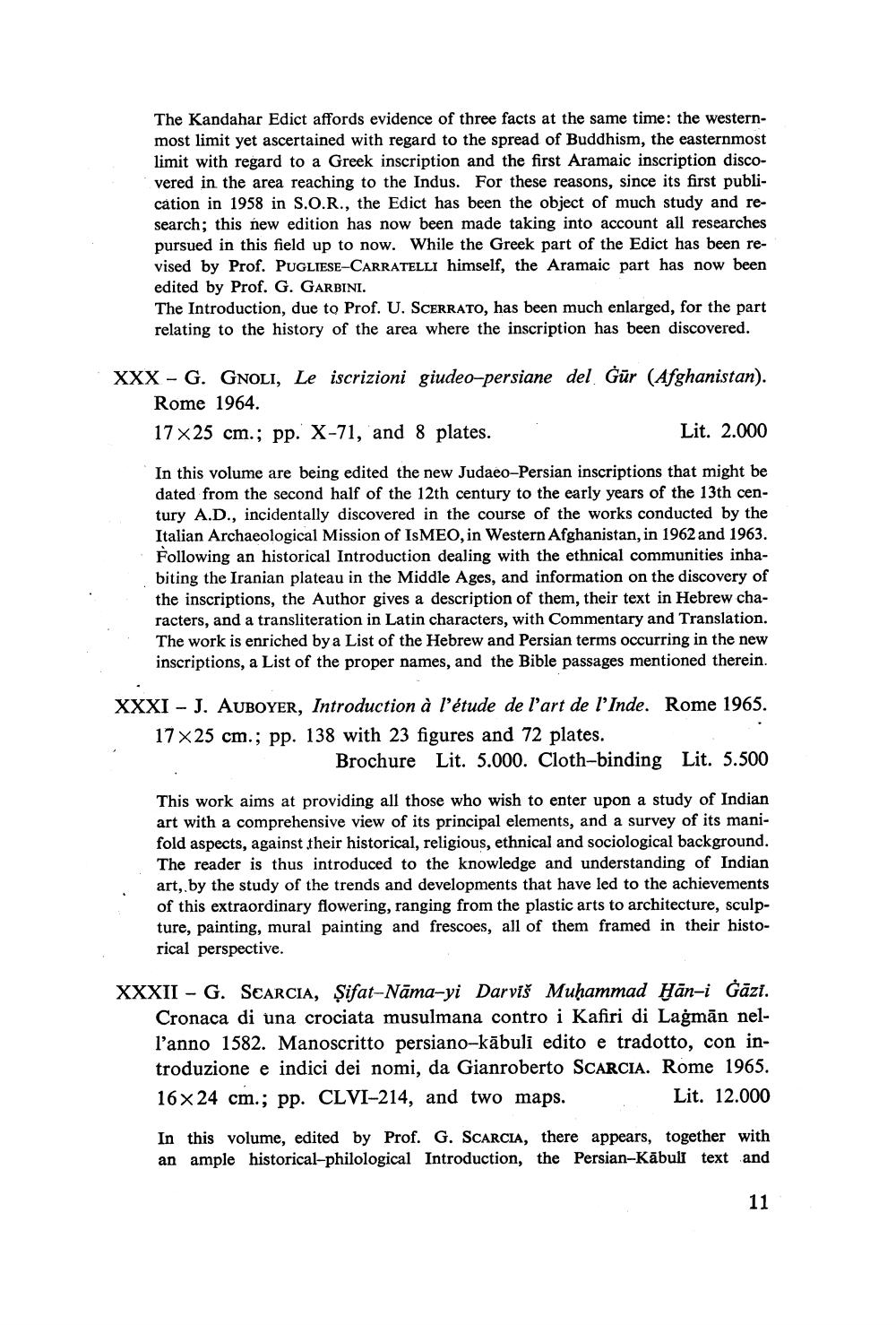________________
The Kandahar Edict affords evidence of three facts at the same time: the westernmost limit yet ascertained with regard to the spread of Buddhism, the easternmost limit with regard to a Greek inscription and the first Aramaic inscription discovered in the area reaching to the Indus. For these reasons, since its first publication in 1958 in S.O.R., the Edict has been the object of much study and research; this new edition has now been made taking into account all researches pursued in this field up to now. While the Greek part of the Edict has been revised by Prof. PUGLIESE-CARRATELLI himself, the Aramaic part has now been edited by Prof. G. GARBINI. The Introduction, due to Prof. U. SCERRATO, has been much enlarged, for the part relating to the history of the area where the inscription has been discovered.
XXX - G. GNOLI, Le iscrizioni giudeo-persiane del Ġūr (Afghanistan).
Rome 1964. 17 x 25 cm.; pp. X-71, and 8 plates.
Lit. 2.000
In this volume are being edited the new Judaeo-Persian inscriptions that might be dated from the second half of the 12th century to the early years of the 13th century A.D., incidentally discovered in the course of the works conducted by the Italian Archaeological Mission of ISMEO, in Western Afghanistan, in 1962 and 1963. Following an historical Introduction dealing with the ethnical communities inhabiting the Iranian plateau in the Middle Ages, and information on the discovery of the inscriptions, the Author gives a description of them, their text in Hebrew characters, and a transliteration in Latin characters, with Commentary and Translation. The work is enriched by a List of the Hebrew and Persian terms occurring in the new inscriptions, a List of the proper names, and the Bible passages mentioned therein.
XXXI - J. AUBOYER, Introduction à l'étude de l'art de l'Inde. Rome 1965. 17 x 25 cm.; pp. 138 with 23 figures and 72 plates.
Brochure Lit. 5.000. Cloth-binding Lit. 5.500
This work aims at providing all those who wish to enter upon a study of Indian art with a comprehensive view of its principal elements, and a survey of its manifold aspects, against their historical, religious, ethnical and sociological background. The reader is thus introduced to the knowledge and understanding of Indian art, by the study of the trends and developments that have led to the achievements of this extraordinary flowering, ranging from the plastic arts to architecture, sculpture, painting, mural painting and frescoes, all of them framed in their historical perspective.
XXXII - G. SCARCIA, Şifat-Nāma-yi Darviš Muḥammad Hān-i Gāzi.
Cronaca di una crociata musulmana contro i Kafiri di Laġmān nell'anno 1582. Manoscritto persiano-kābuli edito e tradotto, con introduzione e indici dei nomi, da Gianroberto SCARCIA. Rome 1965. 16 x 24 cm.; pp. CLVI-214, and two maps.
Lit. 12.000
In this volume, edited by Prof. G. SCARCIA, there appears, together with an ample historical-philological Introduction, the Persian-Kābull text and
11




